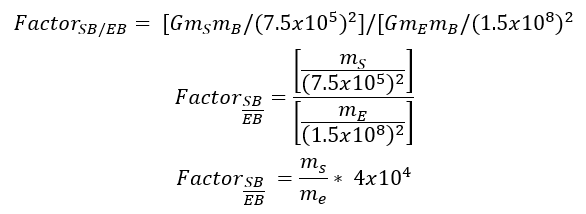How the Barycentre Forces Differ:
The Sun is not the centre of the solar system. The barycentre of the solar system, however, is. Both the Sun and the Earth revolve around it, generally not the centre of the Sun. This means that the motions of the two bodies around the barycentre may significantly affect the Earth-Sun distance, and hence our planet’s climate, more so than the current “scientific consensus”, if there is one, maintains.
When the editors of Science retracted the Valentina Zharkova et al paper, their reasons were that “…the motions of the Earth and the Sun are primarily due to Jupiter and the other giant planets, which accelerate the Earth and the Sun in nearly the same direction, and thereby generate highly-correlated motions in the Earth and Sun.”
“the forces of the solar system barycentre on the Sun are about 13-billion times those on the Earth, and only at one instant per year in the same direction“
An earlier post showed that from an acceleration-direction standpoint, the Earth and the Sun’s orbits are not correlated. But further consideration asks not just are the directions uncorrelated, but asserts that the magnitudes of the forces on the two bodies are substantially different because of the different distances the Earth and the Sun have from the solar system barycentre.
The real difference between the two bodies lies in the force of gravity towards the barycentre that keeps them in orbit. On the one hand, we have a massive Sun revolving around a point very close to it, never far outside of its own radius, and maybe sometimes even at its centre. This means this huge body must make a really tight turn around its orbit—meaning the force of gravitation between it and the barycentre is really large.
The locus of this barycentre-Sun radius is from 0 to just outside the Sun’s radius, 696,340 km—call it 7.5 x 105km. The mean Earth-Sun distance, on the other hand, is about 1.5 x 108 km, or 200 times greater.
We know from validation of Newton’s theory that the force of gravity is inversely proportional to the inverse of the distance between two centre of masses, or more precisely,

Where G is the Gravitational constant, m1 and m2 are the mass of the two bodies, and r is the distance between them.
To compare the force from the barycentre on each of the two bodies, we can say that the force on the Sun is larger than that on the Earth by a factor given by the equation:

Where ms is the mass of the Sun, and me is the mass of the Earth, and ms/me is about 333,000. Thus the factor by which the force of acceleration on the Sun by the barycentre is about 1.33×1010 times that of the force of acceleration on the Earth by the barycentre.
When the editor of Science and peers retracting the V. Zharkova et al paper claim that its conclusions “are based on the assumption that the orbits of the Earth and the Sun about the Solar System barycentre are uncorrelated, so that the Earth-Sun distance changes by an amount comparable to the Sun-barycentre distance”, they presuming a high correlation of both acceleration forces and direction of the changing barycentre. Yet they are widely off the mark, because the forces of the barycentre on the Sun are about 13-billion times those on the Earth, and only at one instant per year in the same direction.
Please enter your email so that we can update you when the new book is out, and to download the free paper:
"You have found a promising approach to demonstrate successfully that the long suspected culprits of global warming, e.g. CO2, CH4, are actually not !"
PhD, Physics
Rutgers University, New Jersey
B.A. Cornell University, New York
"…seems to be path-breaking research in the domain. The paper reads nice and the science involved is analogous and clear. This paper is a hallmark and would benefit the advances in science, government planning as well as policy makers for the next course of action. I congratulate you for this great work and thank for giving me an opportunity to read it and enlighten myself."
PhD, Atmospheric Sci and Meteorology, IISc
M.Sc., Geophysics, ISC
BSc., (Hons) Physics, Delhi U
"An alarmist bias in Global Warming Research has corrupted the academic/scientific community"
Dr. Roy W. Spencer
Ph.D. Meteorology
University of Wisconsin-Madison.
Principal Research Scientist at UoA
Former Senior Scientist for Climate Studies at NASA’s Marshall Space Flight Center
"I have studied your paper during the weekend and I am impressed by your brilliant analysis and convincing argumentation. This looks like a very original thought process and one that does deserve broad dissemination."
B.Sc. (Hons) Mech. Eng.
DTU, Denmark
C.P. Eng. (Chartered Prof. Eng.)
Former Project Manager, CERN
Geneva, Switzerland
You will only receive quality content.
